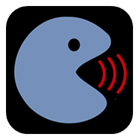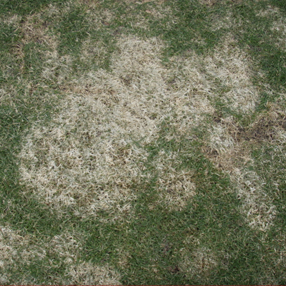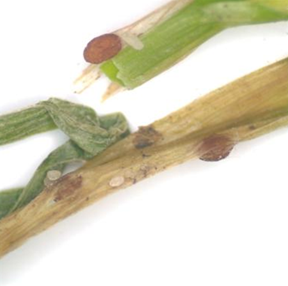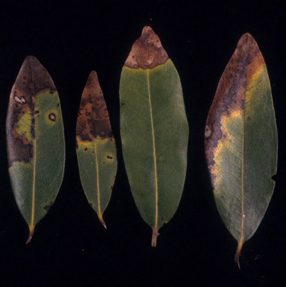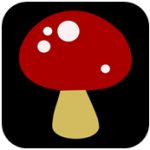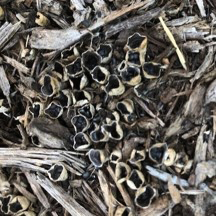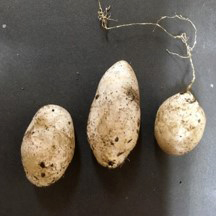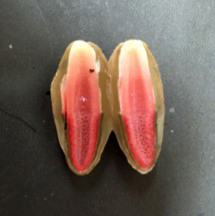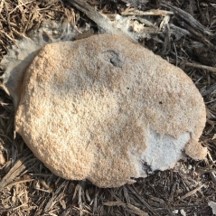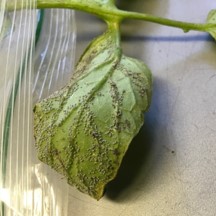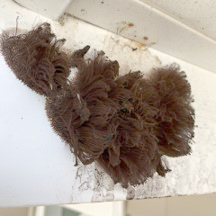![]() The impact of COVID-19 on the Plant Disease Diagnostics Clinic (PDDC) and the services that the clinic provides has continued to evolve. As of March 28, 2020, and until further notice, the PDDC is no longer accepting physical samples for diagnoses, and clinic staff members are restricted to working from home. Nonetheless, I and the other staff at the PDDC are committed to the providing the best possible services that we can to our clients given these restrictions.
The impact of COVID-19 on the Plant Disease Diagnostics Clinic (PDDC) and the services that the clinic provides has continued to evolve. As of March 28, 2020, and until further notice, the PDDC is no longer accepting physical samples for diagnoses, and clinic staff members are restricted to working from home. Nonetheless, I and the other staff at the PDDC are committed to the providing the best possible services that we can to our clients given these restrictions.
While submitting physical samples is not possible, the PDDC is still accpting digital photos for diagnosis. In this month’s PDDC web article, I would like to provide pointers on what sorts of pictures you should take to optimze the possibility I will be able to make as accurate a diagnosis as possible, options for getting the photos to the PDDC and what you can expect after your submission.
What kinds of pictures should I take?
Take lots of pictures
Err on the side of taking too many photos. The more photos you send me, the more likely I will see something that will lead me to an accurate diagnosis.
Take a variety of pictures
These should include:
Landscape shots
These sorts of photos show how your diseased plant is situated in your yard relative to other plants, buildings, driveways, sidewalks, etc. They can often provide clues on environmental factors that may be contributing to the disease problem you are seeing.
Whole plant shots
These photos will show the distribution of symptoms on the plant. Are the symptoms in just one area? Are they scattered throughout the plant? Is the entire plant affected?
Close up shots
Take pictures of affected leaves (both tops and bottoms), branches, roots, fruits or any other affected plant part. I need to look for symptoms (e.g., leaf spots, cankers, discolorations, growth distortions, etc.), as well as signs of pathogens (e.g., fungal sporulation) that can help me with my diagnosis.
Take high quality pictures
This means taking:
High resolution photos
The higher the resolution, the better I will be able to increase the size of the picture and still see lots of detail. The more detail I can see, the more likely I will be able to figure out what’s going on.
Crisp, non-fuzzy photos
If a picture is fuzzy, I won’t be able to see much or tell you much.
How do I get my pictures to the PDDC?
This is typically the easiest way to submit photos. Use pddc@wisc.edu for emailing.
The PDDC website
You will now find links on the PPDC website (on the main page, “Sample Collection and Submission” page and “Service and Fees” page) to a “Digital Diagnosis” form. Fill out the form, upload your photos and click on “Submit”.
Text message
If email or submission via the PDDC website are not options for you, feel free to call me at (608) 262-2863. After we talk, if you need to submit photos, I can provide you a cell phone number where you can send your photos via text message.
What can I expect when I submit my photos?
A prompt response
I try to respond to phone and email inquiries within 24 hours.
The best diagnosis that I can provide
I have always maintained that looking at photos is not the best way to diagnose plant diseases. That said, I will provide you with my best interpretation of what may be happening to your plants based on photos that you provide.
Management recommendations
Where possible, I will provide suggestions on how you can mitigate the problem that you are seeing and prevent it from happening in the future.
Any follow-up you may need
My door (well, actually my email and phone at this point) is always open if you need additional consultations after I provide my diagnosis.
My commitment
It is my commitment to provide you with the best possible service under our current circumstances. Please do not hesitate to contact me at (608) 262-2863 or pddc@wisc.edu if you think I might be able to help you. Also check out the PPDC website for online resources (e.g., University of Wisconsin Garden Facts, Wisconsin Disease Almanac, monthly web articles). And feel free to follow my clinic updates on Twitter or Facebook (@UWPDDC).
Be safe and stay healthy everyone!
P.S.: Bonus points if you know the origin of the title of this month’s article.
